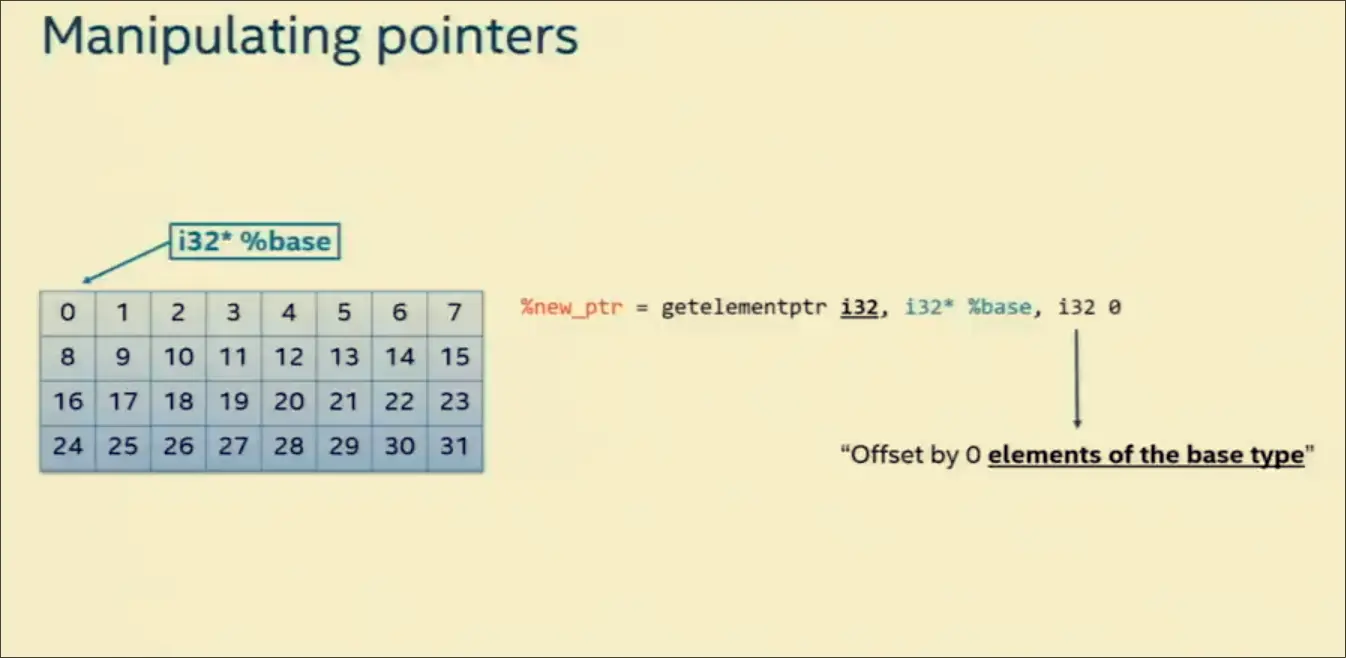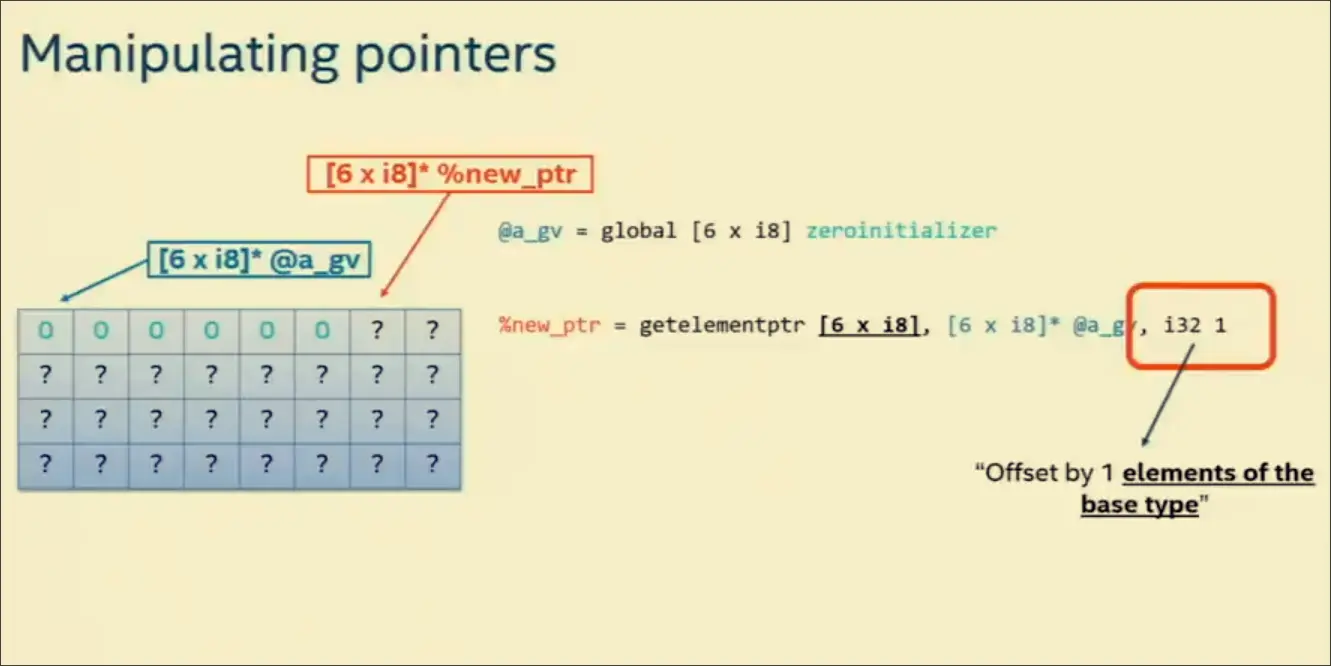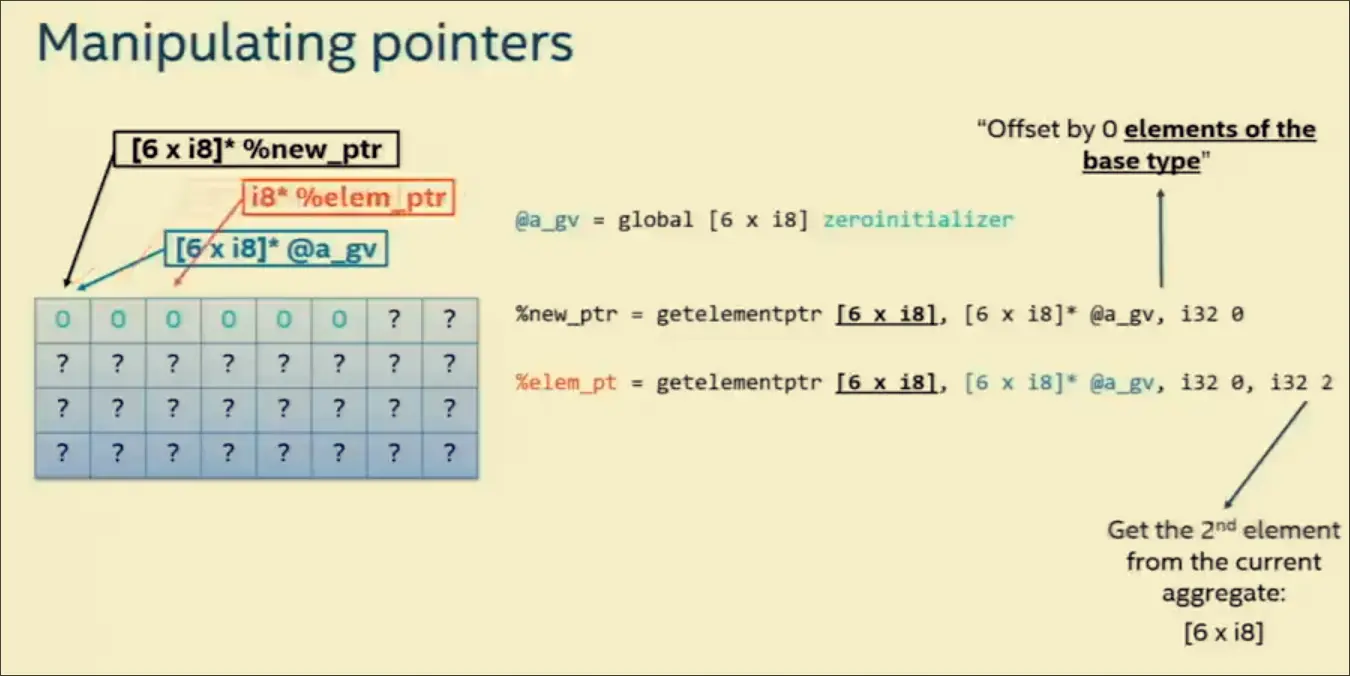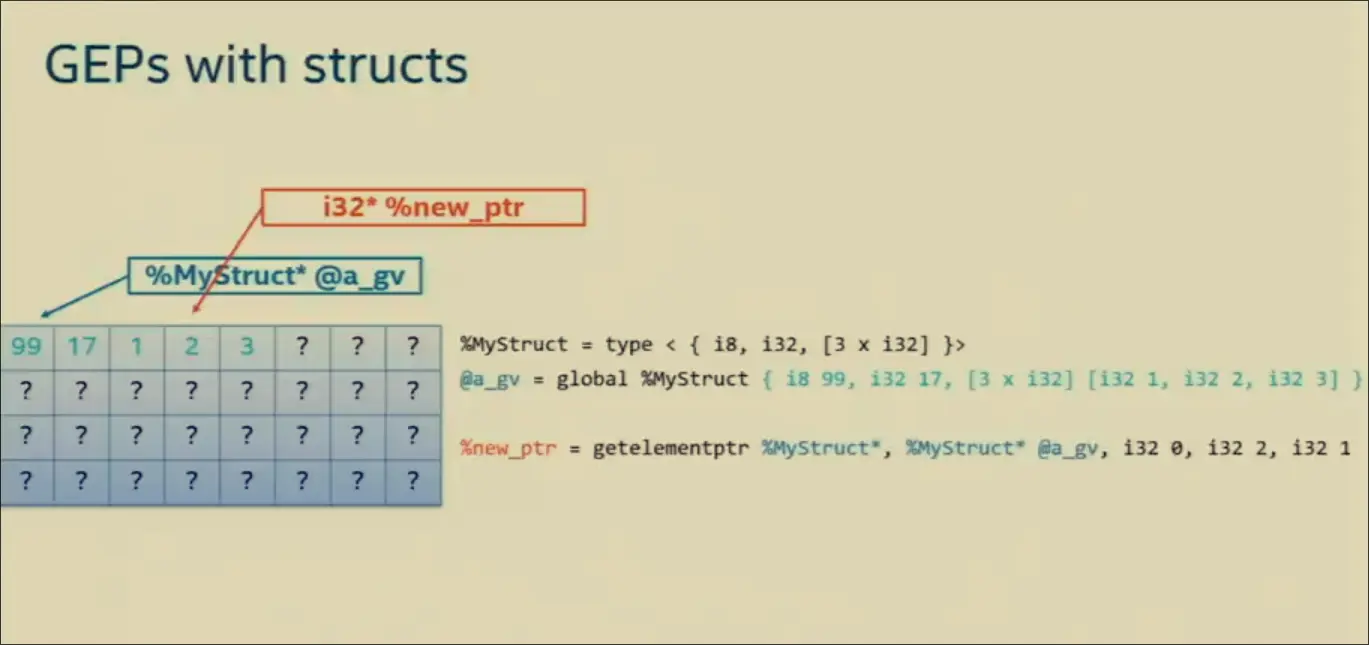The pointer arithmetic instruction. Used to calculate an offset pointer given a value and a struct.
In essence, given a object and a field number, GEP returns the pointer to that object’s field at field number.
Example
define ptr @get_inner_in_array(ptr %p, i64 %idx) {
%q = getelementptr %MyStruct, ptr %p, i64 %idx, i32 1, i32 1
ret ptr %q
}- Takes an untyped pointer
ptrinto a struct of%MyStructwithptr %p - Take a field number
i64 %idx - Firstindex means it starts searching in the
1st sub-element of%MyStruct(assuming that the 1st sub element is an iterable like a list or vector) - Secondindex means it starts searching at the
1st sub-element of%MyStruct.1 - Return the pointer to the field at field number
2019 EuroLLVM Talk Explanation
https://www.youtube.com/watch?v=m8G_S5LwlTo&t=1753s
First Index Offset
the firstindex only offsets the basetype with Pointer Arithmetic. This means if the pointer’s base-type is int, it offsets pointer by i32. If the pointer’s base-type is a 4-integer list, then it offsets by i128 (as 32 * 4 is 128).


n-th index offset

 All subsequent offsets will then be offsets of the inner-element of the first-index’s data-type.
All subsequent offsets will then be offsets of the inner-element of the first-index’s data-type.